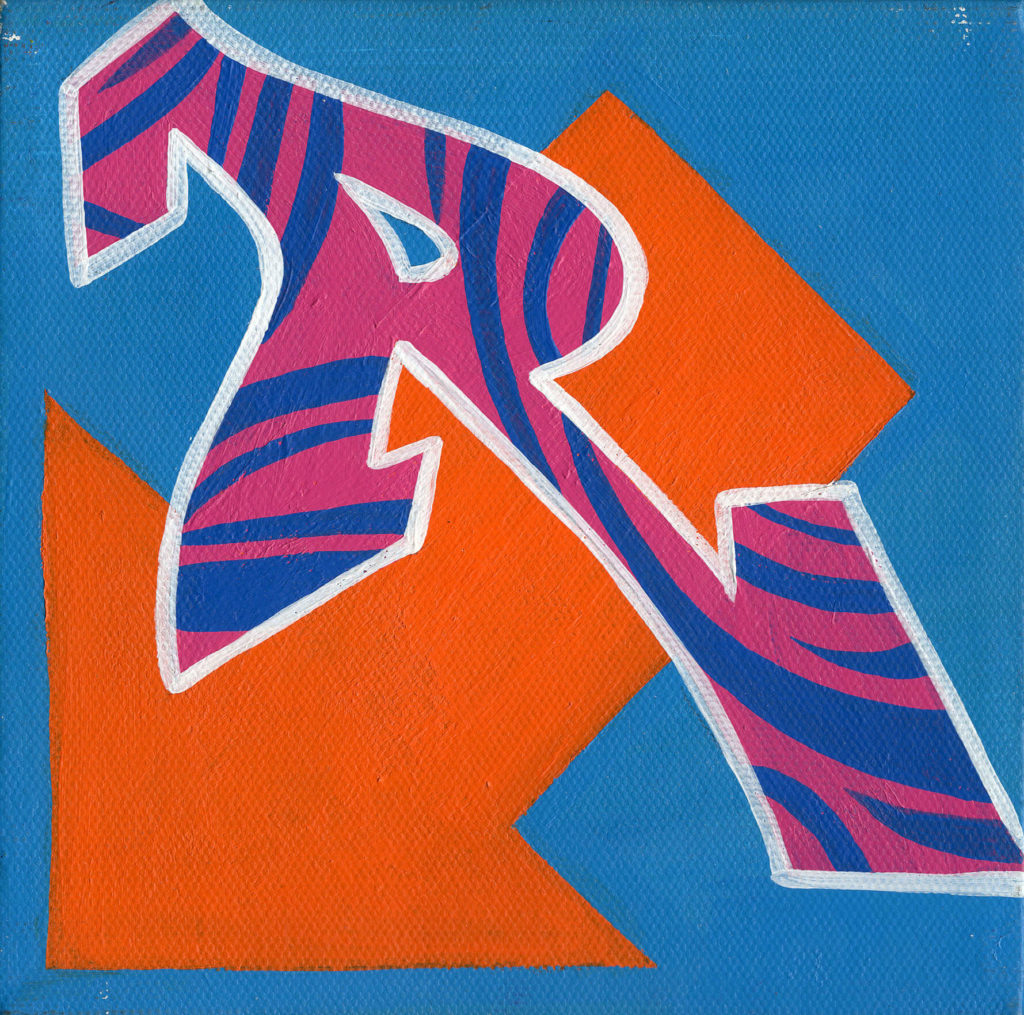

Photo: Silvia Ros, courtesy of Inman Gallery, Houston. Work by Dorothy Antoinette “Toni” LaSelle on view with Inman Gallery, Houston, at the Independent 20th Century fair at the Battery Maritime Building. “What’s special about these is that it represents the hip-hop movement in its infancy.” “These are confessions of me lifting records to sell on the street,” Quiñones said, pointing to the ghostly hands that appear behind each album, tucking them into his jacket. These survived only because they had been hanging in the artist’s home at the time. Quiñones originally made the prints in an edition of 24, but only eight had sold when the rest were destroyed in a flood in his studio in 2006.
#R IN GRAFFITI SERIES#
Rounding out the booth is the last set of 12 giclée prints based on a series of paintings of classic record covers owned in its entirety by musician Eric Clapton. “Keith Haring asked me how I did it, and I told him, ‘You just get a ladder and get some cojones,’” Quiñones said.
#R IN GRAFFITI CRACK#
That includes the drawing for the 1978 handball court mural that inspired Keith Haring’s famed Crack Is Whack piece.
#R IN GRAFFITI FULL#
Quiñones’s booth at Independent-which he considers a “prelude” to the museum retrospective he one day hopes to have-features a selection of original pencil sketches and limited edition reproductions of a pair of full color drawings now owned by the Museum of the City of New York.

“I kept it because it was my life, it was my legacy,” he said. Luckily, even though the train car paintings were fleeting, Quiñones had the foresight-and the faith in his own creativity-to save the preparatory drawings for those works. “People didn’t realize this was an art movement literally under your feet.” “I painted over 100 whole cars, end to end, top to bottom,” he said, noting that the process could take seven to eight hours, all under cover of darkness. It’s not something he’s said in awhile, but that was often the case earlier in the 62-year-old artist’s career, after he made the unlikely leap from painting elaborate murals on New York City subway cars as a teenager to showing at Barbara Gladstone Gallery in the early 1980s. What You Should Know: “I just found out I’m the youngest artist here!” Lee Quiñones told Artnet News. Photo: courtesy of Ross and Kramer Gallery, New York. Work by Lee Quiñones on view with Ross and Kramer Gallery, New York, at the Independent 20th Century fair at the Battery Maritime Building. Hopefully, next time there will be more of them. Here’s a look at our selection of the must-see art at the inaugural Independent 20th Century, from rare work by a famed Surrealist to original drawings by a pioneering graffit artist-plus all four women on view at the fair. (We did not do a gender breakdown for Specific Object at Susan Inglett Gallery, which presented a wide variety of 1960s-era artist ephemera.)īut though more diversity would have been appreciated, the lack of it didn’t mean there wasn’t some stunning art on display. Of the single- or dual-artist presentations, just 14 percent were women, and 37 percent were artists of color.įactoring in group presentations, the final tally, by Artnet News’s count, was 65 male artists to just 14 women, or less than 18 percent. Of the fair’s 32 exhibitors, only four dedicated their booths to solo presentations of female artists, and 10 to artists of color-none of whom were women. What that looked like in reality was somewhat surprising.

This was a chance to revisit the art historical canon as we know it, to make room for artists who had been under-appreciated in their lifetimes, or whose contributions had been undeservedly forgotten-as well as take a new look at established masters and lesser-known facets of their careers. When the Independent Art Fair announced that it was launching a dedicated 20th-century art edition to run during New York Armory Week, the pitch was simple.


 0 kommentar(er)
0 kommentar(er)
